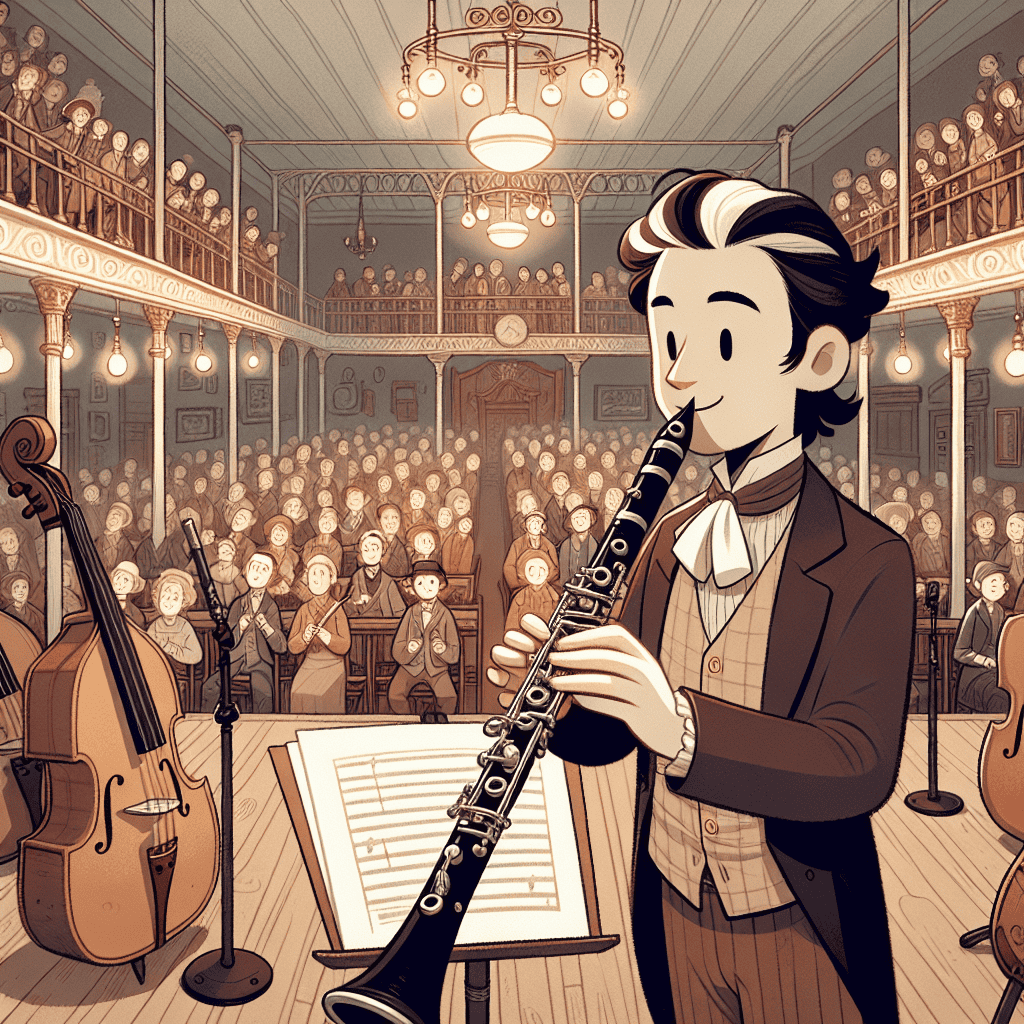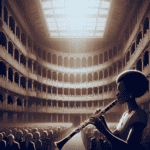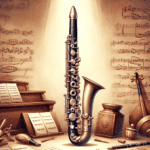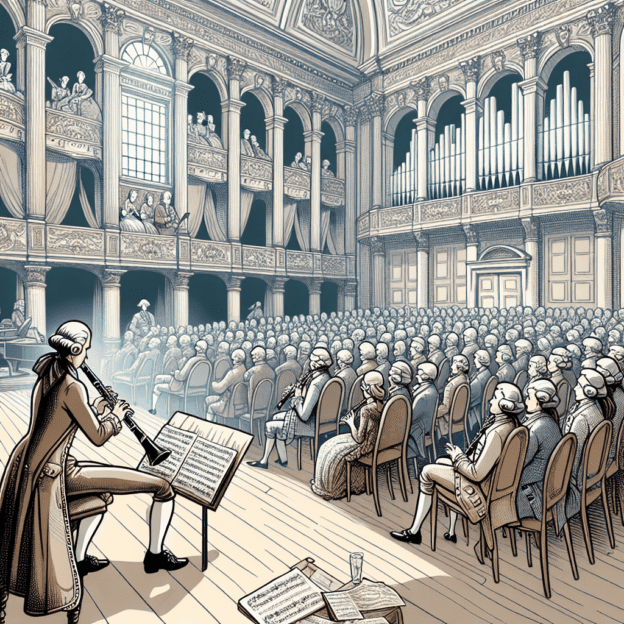Welcome to a journey through the fascinating world of clarinets during the Classical Music Era. The clarinet, known for its rich, resonant sound, has a storied history that often intertwines with some of the most celebrated compositions and musicians of the time. Whether you're a seasoned player, a repair enthusiast, or simply someone with a burgeoning interest in this delightful woodwind, there's always something new to learn. Today, let's explore some intriguing facts about the clarinet from the classical period and how it has influenced the music we love.
The Birth of the Clarinet
The clarinet, as we know it, came into prominence in the early 18th century. Johann Christoph Denner, a German instrument maker, is often credited with its creation around 1700. This early version of the clarinet was a far cry from the modern instrument, featuring only two keys. Over time, the design evolved, adding more keys and improving the instrument's range and playability.
Clarinets in Classical Compositions
The Classical Era, roughly spanning from 1730 to 1820, saw the clarinet becoming increasingly popular among composers. Wolfgang Amadeus Mozart, one of the era's most renowned composers, had a particular fondness for the instrument. His Clarinet Concerto in A Major, K. 622 and Clarinet Quintet in A Major, K. 581 are staples in the repertoire of any serious clarinetist. These pieces not only display the clarinet's versatility but also its capacity for emotional depth and technical brilliance.
| Composer | Composition | Year |
|---|---|---|
| Wolfgang Amadeus Mozart | Clarinet Concerto in A Major, K. 622 | 1791 |
| Wolfgang Amadeus Mozart | Clarinet Quintet in A Major, K. 581 | 1789 |
| Carl Maria von Weber | Clarinet Concerto No. 1 in F Minor, Op. 73 | 1811 |
| Franz Krommer | Clarinet Concerto in E-flat Major, Op. 36 | 1803 |
The Evolution of Clarinet Construction
During the Classical Era, the construction of clarinets saw significant advancements. Instrument makers experimented with different materials and designs to enhance the instrument's sound quality and playability. For instance, the transition from boxwood to grenadilla wood for the body of the clarinet made a significant difference in the instrument's tonal characteristics. Martin Freres, a renowned name in clarinet making, played a pivotal role in these advancements, contributing to the refined designs that we see today.
Famous Clarinetists of the Classical Era
Several virtuoso clarinetists emerged during the Classical Era, leaving an indelible mark on the instrument's history. Anton Stadler, a close friend of Mozart, was one such musician. Stadler's exceptional playing inspired Mozart to write some of his most famous clarinet works. Another notable clarinetist was Heinrich Baermann, who formed a significant part of Carl Maria von Weber's musical circle. Weber composed numerous works specifically for Baermann, showcasing the clarinet's expressive capabilities.
Clarinets in Orchestras
The inclusion of clarinets in orchestras was a game-changer for classical compositions. Initially, orchestras primarily featured strings, but as woodwinds became more prevalent, the clarinet found its place alongside flutes, oboes, and bassoons. The addition of clarinets brought a new dimension to orchestral music, providing a broader palette of colors and textures for composers to work with. This period also saw the rise of the clarinet section, which became a standard part of symphonic orchestration.
Evolution of Clarinet in Orchestras
- Early 18th century: Clarinets occasionally used in orchestras
- Mid-18th century: Clarinets become more common in orchestral works
- Late 18th century: Clarinets established as standard orchestral instruments
- Early 19th century: Clarinet sections fully integrated into symphonic orchestration
Innovations in Clarinet Technique
As the repertoire for the clarinet expanded, so did the technical demands placed on players. Composers began to write more complex passages, requiring advanced techniques and greater mastery of the instrument. This led to the development of new fingerings, articulation methods, and breathing techniques. Players had to adapt and enhance their skills to meet the challenges presented by these innovative compositions.
The Role of Clarinets in Chamber Music
Chamber music also benefited from the clarinet's growing popularity. Composers such as Mozart and Beethoven wrote extensively for small ensembles that included the clarinet. These works often highlighted the instrument's ability to blend seamlessly with strings and other woodwinds, creating rich, intricate textures. The clarinet's unique timbre added a distinctive flavor to chamber music, making it an indispensable part of the genre.
The Clarinet's Influence on Later Eras
The advancements and popularity of the clarinet during the Classical Era laid the groundwork for its continued influence in later musical periods. The Romantic Era, in particular, saw composers like Brahms and Schumann further exploring the clarinet's expressive potential. The innovations in design and technique that began in the Classical Era enabled these composers to push the boundaries of what the clarinet could achieve, leading to some of the most beloved works in the instrument's repertoire.
The clarinet's journey from its early beginnings to its established place in classical music is a testament to its versatility and enduring appeal. Whether you're drawn to its warm, woody tones or its ability to convey a wide range of emotions, the clarinet remains a vital and beloved instrument in the world of music. As you continue to explore the rich history and repertoire of the clarinet, remember the contributions of those who came before us, and take inspiration from their dedication and artistry.
Key Facts About Classical Era Clarinets
- Johann Christoph Denner is credited with creating the clarinet around 1700.
- Mozart's Clarinet Concerto in A Major, K. 622 is a staple for clarinetists.
- Transition from boxwood to grenadilla wood improved tonal quality.
- Anton Stadler and Heinrich Baermann were famous clarinetists of the era.
- Clarinets became a standard part of orchestras during this time.
- New techniques and fingerings were developed to meet complex compositions.
- Chamber music compositions often included clarinets for their unique timbre.
- The Classical Era set the stage for the clarinet's influence in later musical periods.
Table of Contents
- The Birth of the Clarinet
- Clarinets in Classical Compositions
- The Evolution of Clarinet Construction
- Famous Clarinetists of the Classical Era
- Clarinets in Orchestras
- Innovations in Clarinet Technique
- The Role of Clarinets in Chamber Music
- The Clarinet's Influence on Later Eras
- Key Facts About Classical Era Clarinets







